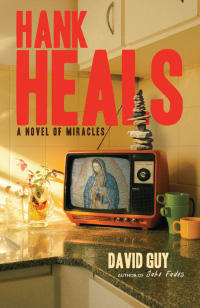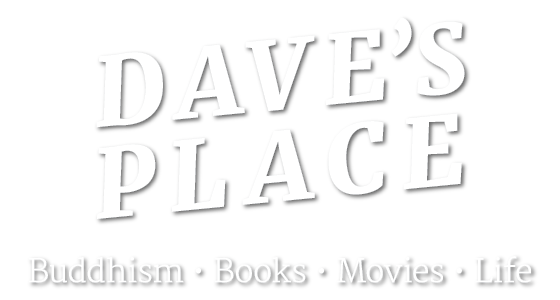Zen Mind, Jewish Mind: Koan, Midrash, and the Living Word by Rami Shapiro. Monkfish. 160 pp. $17.09. *****
Autobiography of a Zen Monk by Taisen Deshimaru. Hohm Press. 212 pp. $21.95. ****
Rabbi Rami Shapiro is a national treasure. We just don’t know it yet. In a career spanning over thirty years, he has written books on any number of religious topics; if he thinks about it he writes about it, and sometimes the writing comes together in a book. He is both a scholar and a wild thinker, with fascinating takes on any number of subjects. Every couple of weeks or so he sends out a substack on a new subject, often with some scholarly facts we didn’t know and a viewpoint we’ve never encountered, and the subscription is free.[1] It’s absolutely my favorite thing in my mailbox. He’s provocative, funny, sarcastic, angry, and sometimes shocking. He’s also a person who shows us that the heart of many religions is the same, and that if we could drop our fighting about petty differences, life would be more peaceful and fruitful.
Zen Mind, Jewish Mind is not just about being Jewish; though Rami’s original ambition was to become the Jewish Alan Watts; he seems to have dabbled in any number of traditions. But behind all his specultations are four propositions, which he writes about in various places. (I found this version in an online magazine called Awaken!)
“1. All life arises in and is an expression of the nondual Infinite Life that is called by many names: Ultimate Reality, God, Tao, Mother, Allah, YHVH, Dharmakaya, Brahman, and Great Spirit, among others.
“2. You contain two ways of knowing the world: a greater knowing (called Atman, Soul, Self, Spirit, or Mind, along with a host of other names) that intuitively knows each finite life as a unique manifestation of Infinite Life; and a lesser knowing (called self, ego, aham, kibr, and the like) that mistakes uniqueness for separateness and imagines itself apart from rather than a part of Infinite Life.
“3. Awakening the Self and knowing the interconnectedness of all life in the singular Life carries with it a universal ethic calling the awakened to cultivate compassion and justice toward all beings.
“4. Awakening your Self and living this ethic is the highest goal you can set for yourself.”
Rabbi Rami hammers away at this formulation—his version of the Perennial Philosophy—all the time. It is the sanest approach to religion/spirituality that I know of.
I don’t know what I expected from I book entitled Zen Mind, Jewish Mind, but what I found was my favorite among Rabbi Rami’s books. He covers a wide range of topics, and there isn’t a dull moment. Just a few quotations that I noted:
“As my Theosophical Society friends put it: satyat nasti para dharma, ‘There is no religion greater than truth’”
“The real reason religion cannot fulfill its promise to bridge the gap between you and God isn’t because there is no God, but because there is no gap, and the harder you try to overcome an imaginary gap, the larger you imagine the gap to be.”
“Odd as it may sound, the ego finds that its own center and nature is beyond itself. The more deeply I go into myself, the more I am not myself, and yet this is the very heart of me.”[2]
“Authentic spiritual awakening doesn’t eliminate the self, what I’m calling ME, it simply places it in its proper place. Mountains, rivers, and ME are not delusions to be eradicated, but illusions to be understood.”
Rabbi Rami ends his book with short chapters which take spirituality into daily life (imitating a series of books by Thich Nhat Hanh), including, How to Listen, How to Speak, How to Pray, How to Shit (a topic Thich Nhat Hanh didn’t cover), How to Vote, and How to Die, among others. If you think How to Shit is not a spiritual question, you need to go back to Square One. Shitting is as important as sitting, as one Zen Master said. In any case, this is a book you need to own.
I’ve always been a fan of Taisen Deshimaru, whom I sometimes think of as the European Shunryu Suzuki, or Seung Sahn (I’m not quite sure who to compare him to, because he was so much his own man). He was the son of a mother who was devout in the Pure Land school, and he was raised in the faith, at least on her side, but spent his life searching for something more, and finally found it in the Zen of Kodo Sawaki, the teacher of (among others) Kosho Uchyama and Gudo Nishijima. The basic teaching is utter devotion to zazen; as Sawaki once said, “Anyone who practices zazen is my disciple.”
Sawaki was known as Homeless Kodo because for most of his life he didn’t have a fixed temple but taught all over Japan in various small dojos; he seemed suspicious of the professional clergy and mostly taught lay people. In fact, despite Deshimaru’s frequent requests to be ordained, Sawaki kept saying no until, in 1965, he had arrived at the end of his life, and decided there wasn’t much time left. He ordained Deshimaru just before he died.
Not long after that, Deshimaru was working at a dojo in Tokyo and gave a tour to some European tourists, who suggested he come to Europe to teach. When he first arrived in Paris he worked in a health food store and did shiatsu massage, and in his ample spare time wrote this memoir of early days,
He’d had a most eventful life, working as a businessman like his father, getting caught up in World War II, though he didn’t favor his country’s declaration of war (neither did Sawaki). There were any number of hair-raising moments in his work during the war, which he spent mostly in Indochina; I didn’t fully understand the politics of the situation, but the man went through hell, and at times did zazen in solitary confinement in a prison, where he was under the threat of execution. But he emerged eventually and got back to a Japan that was struggling to recover after the war. After various setbacks he made his way to Europe.
In comparison to any number of Zen teachers, who carefully adhere to traditional teachings, Deshimaru was a loose cannon, likely to say anything. As an example, his student Philip Coupey tells in his Forward of a moment when a journalist asked if Deshimaru had moved to France in order to become a Zen master, since that might not have happened in Japan, where he wasn’t part of the hierarchy.
Deshimaru replied, “Ridiculous! You do not go anywhere to be a master! An authentic person does not want to be a master. I did not want to be a master; I wanted to be unsui to become like clouds and water. Along a simple path.”
The befuddled journalist said, “You came to Europe to become like clouds and water?”
“I come here to help God!” Deshimaru replied. “You know, God?”
The man was not an easy interview.
Despite Deshimaru’s unusual and adventurous life, my favorite moments in this book were the glimpses of Sawaki. Here, for example, was his kusen[3] the first time Deshimaru did zazen with the group:
“Zazen is to become intimate with yourself. Zazen is to know how to find yourself alone at the heart of the universe and get to know yourself, to become perfectly familiar with yourself. In zazen, you should not hope to obtain anything, you should be completely mushotoku.[4] You must not see satori, nor dismiss your doubts. Don’t try to chase away awkward thoughts either, because none of that matters.
“Zazen is not thinking with your head!. Zazen is a whole-body discipline. It is with all of your senses, not with your brain, that you grasp the way of the Buddha. This physical discipline is itself satori. The posture is enough to attain satori.
“During zazen, you get acquainted with the universe, contemplating it at a glance.”
When Deshimaru returned after the war, he was once again determined to become a priest, and approached Sawaki with the idea.
“That’s really not necessary,” Sawaki said. “You are not really going to fatten the ranks of that gaggle of degenerate and useless monks. Continue to do zazen, but by living life with ordinary people. . . .
“True Zen, you see, must be able to arise from any aspect of our daily lives.”
He later repeated his refusal.
“You have to understand that the way of the bodhisattva, which is to stay in the world to help others, is much more painful than that of the monk who retreats to live in a monastery. Continue to practice zazen; we’ll see what happens later.”
Sawaki was a true original, and Deshimaru took his attitude with him when he made his way to Europe. His lineage has continued in Europe with Philippe Coupey, and in this country by Richard Collins, who translated this volume.
[1] Here’s the latest: https://rabbirami.substack.com/p/yom-hashoah
[2] Dogen makes this same observation is the Genjokoan.
[3] A short spontaneous talk during zazen.
[4] Without goal or expectation of profit.
 Available Now →
Available Now →Recent Evening Mind Posts
Over the HillSwan SongA Star Is Not BornThe Man HimselfTwo Loose CannonsAspiration Meets RealityDogen for the MassesWeird From the Get GoTwo MasterpiecesMary, Erica, MirandaUntil the EndUnfinished LivesAmerican OriginalLosing ItKeep an Eye on IgorAnd Is He PissedLooks Pretty Good to MeShe Wasn’t Crazy. The World Was.Elmore the GreatWriting Like God
View Other Essays by Topic
agingAmerican literatureartBuddhismChristianitycreative processdeath and dyingmeditationmoviesmusicracereligionsexspiritualitythe art of narrativeUncategorizedworld literature

